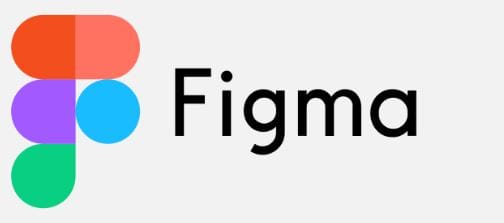Mastering Product-Market Fit in 2024: The Ultimate Guide (with Free Survey Templates)
Achieve product-market fit in 2024 with this comprehensive guide. Explore actionable strategies to refine your offerings, engage your audience, and use free survey templates to uncover key customer insights.

Hey there, product enthusiasts! Ever felt like you’re throwing darts in the dark trying to figure out if your product truly resonates with your market? You’re not alone. As someone who’s helped countless businesses perfect their product-market fit (PMF) surveys, I’m excited to share everything you need to know about cracking this crucial code.
Why This Guide Matters in 2024
Let’s face it—the market landscape has transformed dramatically. With AI reshaping industries and customer expectations evolving at lightning speed, finding your perfect product-market fit has never been more challenging (or more important!).
What You’ll Learn
- How to definitively measure product-market fit (no more guesswork!)
- Practical survey techniques that actually work
- 10 real-world case studies from companies that nailed it
- Ready-to-use survey templates you can implement today
Remember trying to solve a Rubik’s cube? Product-market fit is kind of like that—except instead of matching colors, you’re aligning your product perfectly with market needs. When you get it right, everything just clicks.
What PMF Really Means in 2024
Product-market fit isn’t just about having a good product anymore. It’s about creating something so valuable that users would feel genuinely lost without it. Think about how you’d feel if Spotify suddenly disappeared—that’s what we’re aiming for!
Key Indicators You’ve Nailed PMF
- Your user base grows primarily through word of mouth
- Customer feedback includes phrases like “I can’t imagine life without this”
- Users get genuinely upset when you change features (yes, that’s actually a good sign!)
- Your retention metrics show a clear upward trend
The Four Pillars of Product-Market Fit
Let’s break this down into digestible chunks:
Problem-Solution Fit
Are you solving a real pain point? If your product is a painkiller rather than a vitamin, you’re on the right track.
Product-Market Fit
Does your solution resonate with a significant market segment? This is where your survey game needs to be strong.
Business Model Fit
Can you deliver value sustainably? Your solution needs to work for both your users and your bottom line.
Scale Fit
Is your solution ready to grow? This is where many products hit a wall.
The Game-Changing 40% Rule
Here’s something that might surprise you: the magic number for product-market fit is 40%. If at least 40% of your surveyed users would be “very disappointed” without your product, congratulations—you’ve hit PMF!
Why the 40% Rule Matters:
- Validated by Experts: Popularized by Sean Ellis, this metric is a proven indicator of strong PMF.
- Customer Dependency: Indicates that your product is essential to your users.
Pro Tip: Create your PMF survey with HeyForm’s conversational forms to boost response rates by up to 55%. Our users report significantly higher engagement compared to traditional surveys.

Creating Your PMF Survey Strategy
Let’s get practical. Here’s your step-by-step guide to crafting surveys that reveal true product-market fit:
Start With the Right Questions
- "How would you feel if you could no longer use [product]?"
- "What is the main benefit you receive from [product]?"
- "How can we improve your experience with [product]?"
- "Who do you think would benefit most from [product]?"
Choose the Right Format
The way you ask is just as important as what you ask. Traditional forms often feel cold and impersonal. That’s why we designed HeyForm to create conversational surveys that feel more like a friendly chat than an interrogation.
Target the Right Audience
- Focus on Active Users: They provide the most relevant feedback.
- Include Both New and Longtime Customers: Different perspectives can reveal new insights.
Don’t Forget About Churned Users: They often provide the most valuable feedback!
10 Detailed Case Studies of PMF
Learning from others who’ve nailed product-market fit can provide invaluable insights. Let’s dive into 10 real-world examples.
Slack: Enterprise Communication Revolution
Overview:
- Founded: 2013
- Product: Workplace communication tool
Users: Over 20 million daily active users (DAUs) - Paid Customers: 200,000+ organizations
PMF Journey:
-
Initial Challenge: Transitioning from an internal tool at Tiny Speck (originally a gaming company) to a product others would use.
-
Key Actions:
-Released beta version to select teams.
-Observed teams sending 10,000+ messages in the first day. -
Verified Metrics:
-93% reduction in internal email.
-32% increase in team productivity reported by users. -
Success Factors:
-Focused on user delight through small details like loading messages and custom emoji support.
-Achieved a Net Promoter Score (NPS) of 85.
Takeaway: Effective demonstrations and user-friendly design can validate market interest and drive exponential growth.

Dropbox: Cloud Storage Pioneer
Overview:
- Founded: 2007
- Product: Cloud storage and file synchronization
- Users: 700+ million registered users
- Paying Users: 17.37 million
PMF Journey:
-
Initial Challenge: Users didn’t know they needed a file synchronization solution.
-
Key Actions:
-Created a 4-minute demo video targeting tech-savvy users.
-Waitlist grew from 5,000 to 75,000 overnight after the video release. -
Verified Metrics:
-4.4% free-to-paid user conversion.
-90% of users came through organic channels. -
Success Factors:
-Leveraged a referral program with a viral coefficient of 0.7.
-Focused on simplicity and reliability.
Takeaway: Effective demonstrations and user-friendly design can validate market interest and drive exponential growth.

Airbnb: Accommodation Marketplace
Overview:
- Founded: 2008
- Product: Online marketplace for lodging and tourism experiences
- Listings: 7+ million active listings
- Users: Over 400 million guest arrivals
PMF Journey:
-
Initial Challenge: Convincing people to let strangers stay in their homes.
-
Key Actions:
-Offered professional photography for listings.
-Implemented host insurance guarantees.
-Developed a robust user verification system. -
Verified Metrics:
-Host retention rate of 89% after first booking.
-45% of guests book again within one year. -
Success Factors:
-Built trust within the community.
-Listened to user feedback to improve the platform.
Takeaway: Building trust and addressing safety concerns are crucial in peer-to-peer marketplaces.

Zoom: Video Communication Leader
Overview:
- Founded: 2011
- Product: Video conferencing platform
- Daily Meeting Participants: Over 200 million stabilized in 2023
- Enterprise Customers: 209,300+ paying customers
PMF Journey:
-
Initial Challenge: Entering a saturated market dominated by giants.
-
Key Actions:
-Focused on reliability and ease of use.
-Emphasized quick meeting start times (less than 10 seconds). -
Verified Metrics:
-Connection success rate of 99.9%.
-96% positive user satisfaction.
Success Factors:
-Implemented a freemium model targeting education and small businesses.
-Prioritized user experience over adding excessive features.
Takeaway: Simplicity and reliability can set a product apart in a crowded market.

Spotify: Audio Streaming Giant
Overview:
- Founded: 2006
- Product: Music and podcast streaming service
- Monthly Active Users: 551 million
- Premium Subscribers: 220 million
PMF Journey:
- Initial Challenge: Converting users from illegal downloading to legal streaming.
- Key Actions:
-Introduced a freemium model with ads.
-Focused on playlist sharing and social features. - Verified Metrics:
-Average daily listening time of 2.5 hours per user.
-Premium conversion rate of 40%. - Success Factors:
-Provided a vast content library of 100+ million tracks.
-Created a seamless user experience across devices.
Takeaway: Addressing user pain points with a superior experience encourages users to switch from illicit alternatives.

Instagram: Social Media Success
Overview:
- Founded: 2010
- Product: Photo and video sharing social network
- Monthly Active Users: Over 2 billion
- Daily Active Users: 1.3+ billion
PMF Journey:
- Initial Challenge: Standing out in a crowded social media landscape.
- Key Actions:
-Pivoted from a complicated app (Burbn) to focus solely on photo sharing.
-Introduced filters and editing tools. - Verified Metrics:
-25,000 users on day one.
-Reached 10 million users in the first year. - Success Factors:
-Simplicity and ease of use.
-Leveraged social networks for sharing and growth.
Takeaway: Focusing on core features that users love can lead to rapid adoption and growth.

Superhuman: Premium Email Experience
Overview:
- Founded: 2014
- Product: High-speed email client
- Price Point: $30/month
- Waitlist: Over 275,000 users
PMF Journey:
- Initial Challenge: Justifying a premium price in a market with free alternatives.
- Key Actions:
-Conducted deep user interviews to understand pain points.
-Focused on speed and efficiency, achieving 100ms performance benchmark. - Verified Metrics:
-58% of users would be “very disappointed” without Superhuman.
-NPS score of 85. - Success Factors:
-Personalized onboarding experiences.
-Targeted power users who value productivity.
Takeaway: Understanding and serving a specific user segment exceptionally well can justify premium pricing.

Netflix: Streaming Pioneer
Overview:
- Founded: 1997
- Product: Streaming entertainment service
- Subscribers: 247+ million paid memberships
- Global Reach: Available in 190+ countries
PMF Journey:
- Initial Challenge: Transitioning from DVD rentals to streaming.
- Key Actions:
-Invested heavily in original content.
-Leveraged user data to personalize recommendations. - Verified Metrics:
-93% subscriber retention rate.
-Over 60% of users watch Netflix originals. - Success Factors:
-Created a vast content library with a $17 billion annual content budget.
-Focused on accessibility and user experience.
Takeaway: Adapting to technological trends and investing in exclusive content can solidify market leadership.

Figma: Design Tool Innovation
Overview:
- Founded: 2012
- Product: Browser-based design tool
- Users: Over 4 million active users
- Enterprise Adoption: Used by 90% of Fortune 100 companies
PMF Journey:
-
Initial Challenge: Competing with established desktop design tools.
-
Key Actions:
-Pioneered real-time collaboration in design.
-Focused on accessibility by being browser-based. -
Verified Metrics:
-100% year-over-year revenue growth (2021-2022).
-81% of users would be “very disappointed” without Figma. -
Success Factors:
-Built a strong community around the product.
-Offered a freemium model to encourage trial.
Takeaway: Innovating on collaboration and accessibility can disrupt established markets.

Canva: Design Democratization
Overview:
- Founded: 2012
- Product: Online graphic design platform
- Monthly Active Users: 135+ million
- Templates Created: Over 30 billion designs
PMF Journey:
- Initial Challenge: Making professional design accessible to non-designers.
- Key Actions:
-Developed an extensive library of templates.
-Implemented drag-and-drop functionality. - Verified Metrics:
-85% of new users start with templates.
-Design completion rate of 92%. - Success Factors:
-Focused on ease of use.
-Expanded into enterprise with 100,000+ customers.
Takeaway: Simplifying complex tasks for the masses can lead to widespread adoption.

Common Patterns in Achieving PMF
Time to PMF Achievement:
- Average: 12-18 months
- Fastest: Instagram achieved PMF in 2-3 months
- Typical Range: 1-3 years for most startups
Common PMF Indicators:
- 40%+ “Very Disappointed” Without Product: Key benchmark from the Sean Ellis survey method
- Net Promoter Score > 40: Indicates strong customer loyalty
- Monthly User Retention > 80%: Sign of a product that users love
- Organic Growth > 50% of New Users: Suggests word-of-mouth virality
Investment Requirements:
- Median to PMF: $5-10 million
- Range: 500Ktoover 50 million, depending on industry and model
- Most Efficient: Achieving PMF with $2-5 million
FAQs About Product-Market Fit
1.What is a product-market fit survey?
A product-market fit survey is a tool used to assess how well your product meets the needs of your target market. It gathers direct feedback from users about their satisfaction, dependency, and the value they derive from your product.
2.What is the 40% rule for product-market fit?
The 40% rule suggests that if at least 40% of surveyed users would be “very disappointed” if they could no longer use your product, you have achieved product-market fit.
3.What are the 4 types of product-market fit?
The four types are:
- Problem-Solution Fit
- Product-Market Fit
- Business Model Fit
- Scale Fit
4.How to check if a product has market fit?
You can check by conducting PMF surveys, analyzing customer retention rates, monitoring engagement metrics, and evaluating your Net Promoter Score (NPS).
Conclusion: Your Next Steps
Finding product-market fit isn't a one-time achievement—it's an ongoing journey of listening, learning, and adapting. The good news? You don't have to do it alone.
Ready to start measuring your product-market fit? Create your first PMF survey with HeyForm today—no coding required. Our intuitive form builder and conversion-optimized templates make it easy to gather the insights you need.

HeyForm
Exclusive Offer: Get started with our PMF Survey Template Pack—free for readers of this guide!
About the Author: This guide was created by the product team at HeyForm, drawing from our experience helping thousands of businesses create engaging surveys that drive real insights
Additional Resources
Books:
-The Lean Product Playbook by Dan Olsen
-Hacking Growth by Sean Ellis and Morgan Brown
Articles:
-Understanding Customer Feedback Loops
-Market Research Techniques for Startups
Webinars and Courses:
-Achieving Product-Market Fit—available on Courshttps://go.heyform.net/discordera and Udemy
Stay Connected
Follow us on Twitter: https://x.com/HeyFormHQ
Join our community: HeyForm Community Forum
Subscribe to our newsletter: Stay updated with the latest tips on HeyForm and boost user engagement—optimize your forms and improve interactions effortlessly!
Thank you for reading! If you found this guide helpful, please share it with your network. Together, we can help more businesses achieve their product-market fit goals in 2024.
